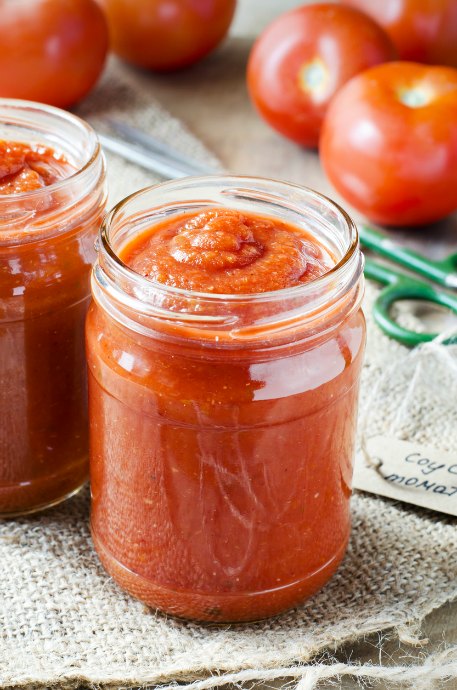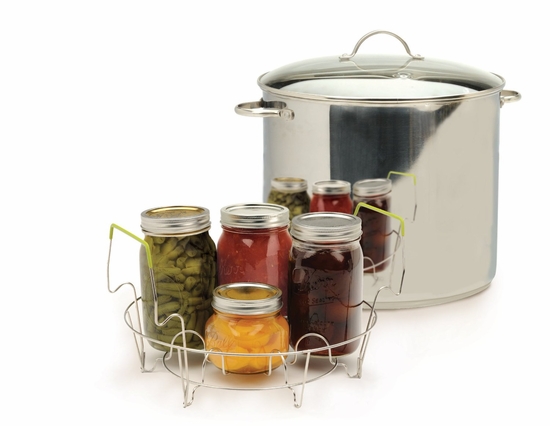Water Bath Canning Tomatoes: Do's and Don'ts
Posted by Julie on Aug 22nd 2016
Our homegrown tomatoes are starting to ripen, and we have plenty of ideas for how to use them. Not only are they perfect for sauces and salads, they're also delicious sliced with a bit of salt and pepper. So easy! But as with zucchini, we know the supply of tomatoes will outlast our appetite for them. Fortunately, water bath canning tomatoes is a simple and inexpensive way to preserve this summer harvest. It's also safe, provided you follow important guidelines.
Read on to learn more about the steps in water bath canning tomatoes, equipment you'll need, and recipes to help ensure your canned tomatoes stay delicious all through the winter.

Water Bath Canning Tomatoes: Helpful Resources
First, an important disclaimer: While preserving your homegrown food can be simple, it's not without risk. We highly encourage you to check out the USDA's Complete Guide to Home Canning, which covers all aspects of food preservation at home.
The USDA's guide is exhaustive, so take a short cut and go straight to the tomato section. This guide from the University of Georgia could be a smart reference too. It covers the necessary equipment, safety precautions and processing times for water bath canning tomatoes, as well as approved recipes.
Water Bath Canning Tomatoes: Food Safety Precautions
You may be wondering, if I can preserve tomatoes using water bath canning, can I preserve spaghetti sauce? The answer is most likely "no," and if your spaghetti sauce recipe includes meat, the answer is definitely "no."
Here's why: Water bath canning tomatoes works because tomatoes are acidic. Potential contaminants like bacteria and mold cannot survive in an acidic environment. Even so, recipes call for lemon juice or powdered citric acid to be safe. This ensures the pH is sufficiently low that botulism spores cannot survive.

Adding lower acid or non-acidic ingredients to tomato sauce -- like onions, peppers, garlic and basil -- brings the pH up. Only tested and approved sauce recipes should be processed in a water bath canner.
Meat brings the pH even higher. Lemon juice can't offset that high of a pH. Only a pressure canner can raise the temperature high enough for a long enough time to safely preserve meat sauce.
Water Bath Canning Tomatoes: Required Equipment
While it's possible to make do without some water bath canning equipment, it does make the process easier and safer. Water bath canning sets often include a large stockpot with a capacity of at least 20 quarts. If you already have a stockpot of this size, you can buy a canning rack and canning utensils separately.

You'll also want to blanch your tomatoes before canning them, using a smaller stockpot, slotted spoon and paring knife. Use the paring knife to core and score the tomatoes so they peel easily.
Water Bath Canning Tomatoes: Recipes to Try
We can't overemphasize the importance of following approved recipes to the letter when water bath canning tomatoes. It's not worth risking botulism or other bacterial contamination. Check out the Ball Book of Canning and Preserving, which is full of great recipes you can trust.
There are also a few approved recipes in circulation on the internet, and these two in particular caught our eye.
Canned Whole Peeled Tomatoes: Food in Jars
Marisa from Food in Jars is a home canning authority, frequently cited around the web on the do's and don'ts of canning. Her post on canning whole peeled tomatoes shows every step in the process.
Canned Spaghetti Sauce: HGTV
This article on HGTV's website does a good job of explaining the safety factors of canning in greater detail. It also includes a spaghetti sauce recipe that sounds great. We'd caution any chefs who are cooking at altitude to refer to the water bath canning processing times in the guide from the University of Georgia.

